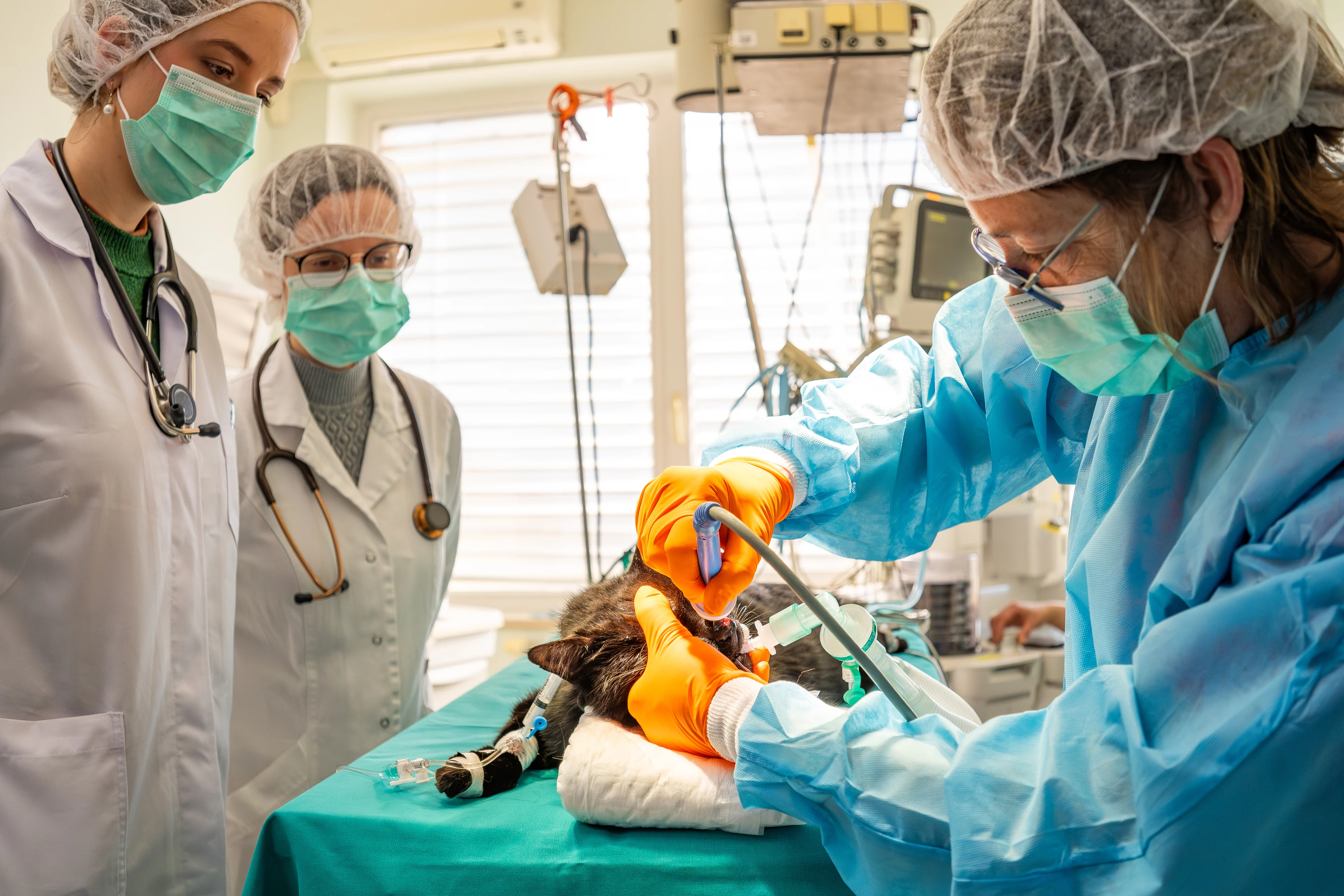
In the Literature
Stabile M, Vicenti C, Piemontese C, et al. Evaluation of different constant rate infusions of dexmedetomidine in cats undergoing elective surgery. J Feline Med Surg. 2025;27(5):1098612X251330169. doi:10.1177/1098612X251330169
The Research …
Dexmedetomidine is a highly selective alpha-2 agonist frequently used as a sedative and preanesthetic medication in cats. When used as part of a balanced anesthetic protocol, dexmedetomidine provides dose-dependent sedation and analgesia, as well as decreased anesthetic gas requirements. Dexmedetomidine also has well-known cardiovascular adverse effects (eg, decreased heart rate, increased systemic vascular resistance, decreased cardiac output).1
This studya evaluated the clinical effects of 3 different CRIs of dexmedetomidine administered to healthy female cats undergoing general anesthesia for elective ovariectomy and sought to identify a CRI that provided the optimal balance of analgesia with minimal cardiovascular adverse effects.
A total of 67 cats were included as part of the study and randomly assigned to 1 of 4 groups: DEX1 (1 microgram/kg/hour), DEX2 (2 micrograms/kg/hour), DEX3 (3 micrograms/kg/hour), or a control group (saline solution). Each cat was premedicated with IM buprenorphine, dexmedetomidine, and alfaxalone mixed in the same syringe. Cats were induced with IV alfaxalone and maintained with isoflurane (inhalant); SC robenacoxib and SC amoxicillin/clavulanic acid were subsequently administered. CRIs were initiated 10 minutes after intubation, and physiologic variables (eg, heart rate, respiratory rate, blood pressure) were assessed at baseline prior to initiation of the CRI and every 15 minutes thereafter. Analgesic effects were assessed based on the need for intraoperative rescue analgesia. Once in recovery, investigators recorded time to extubation and quality of recovery.
Dexmedetomidine CRI resulted in an isoflurane-sparing effect in all DEX groups, with DEX3 showing the most clinically relevant effect. There were no differences in heart rate observed among the 4 groups. DEX3 was associated with higher (yet clinically acceptable) blood pressure measurements, as well as significantly fewer requirements for rescue analgesia. Recovery scores were similar among all groups, with significantly less agitation and dysphoria noted in DEX2 and DEX3.
… The Takeaways
Key pearls to put into practice:
Advantages of CRI dexmedetomidine versus a single bolus dose include steady plasma concentrations, lower total dose requirements, longer duration of effect, and reduction of cardiopulmonary adverse effects.2,3
Dexmedetomidine is often avoided in cats due to concern for associated bradycardia, but bradycardia should be evaluated in the context of other physiologic parameters (eg, hemoglobin oxygen saturation [SPO2], end-tidal partial pressure of carbon dioxide [ETCO2]).
Cats with a relatively low heart rate but normal SPO2, ETCO2, and other vital parameters following dexmedetomidine administration may be inferred to be tolerating a reduced heart rate without significant cardiovascular adverse effects.
Reflex bradycardia caused by systemic hypertension related to dexmedetomidine should not be treated with an anticholinergic; however, there is no absolute contraindication to anticholinergic administration in these patients. If a patient is bradycardic and hypotensive (ie, low heart rate, low systemic vascular resistance) following dexmedetomidine administration, an anticholinergic (eg, atropine, glycopyrrolate) may be warranted regardless of when the alpha-2 agonist was originally administered.
a This study was supported by a scholarship from the Orion company.
You are reading 2-Minute Takeaways, a research summary resource presented by Clinician’s Brief. Clinician’s Brief does not conduct primary research.